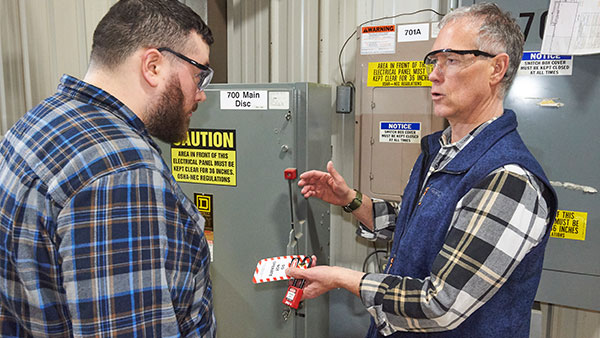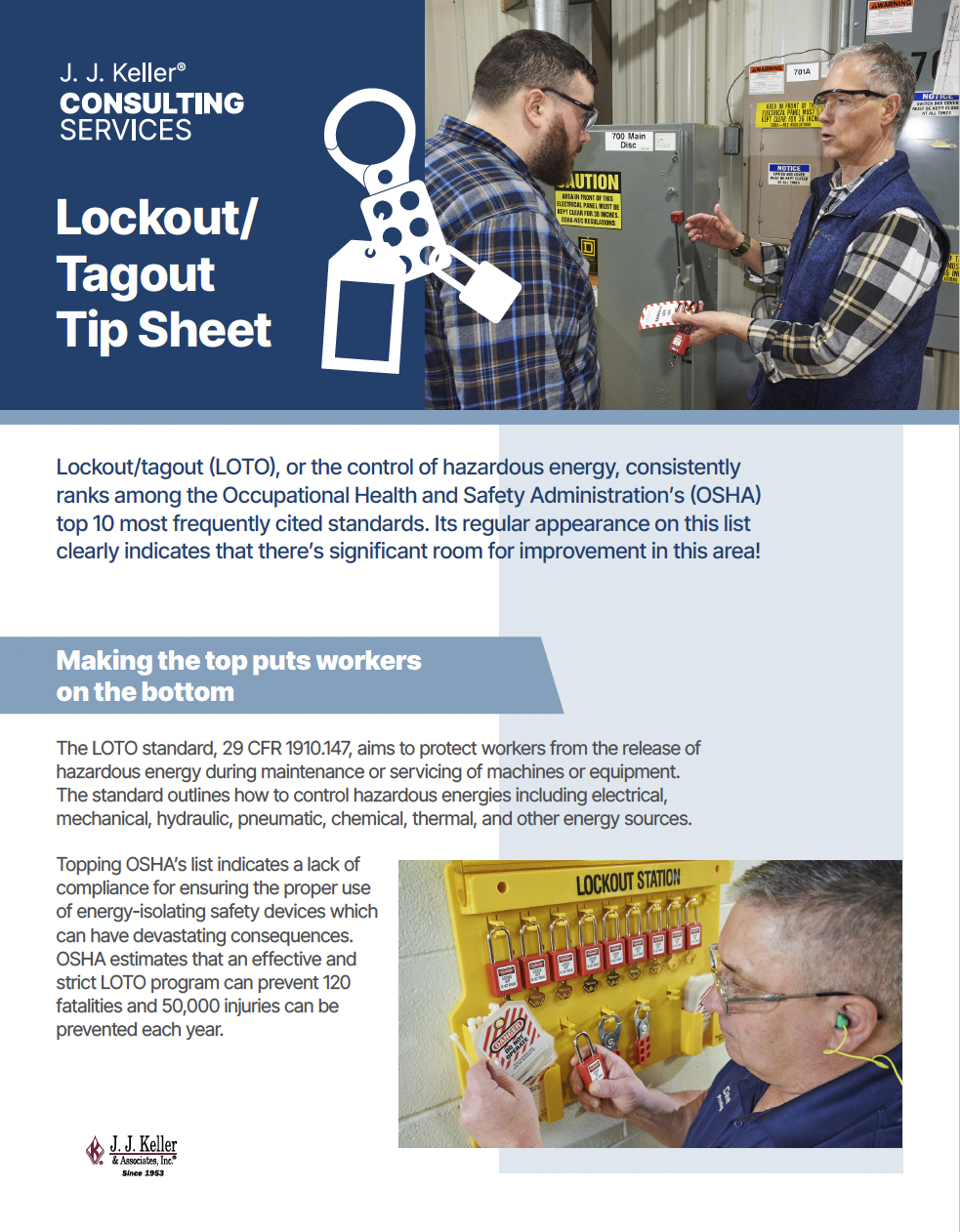Our consultants will assist you with implementing a compliant LOTO program, ensuring that your facility is in full compliance with every aspect of the requirements, and has a full understanding of how to maintain compliance with both the program and the OSHA requirements.
The OSHA standard for The Control of Hazardous Energy (Lockout/Tagout), 29 CFR 1910.147, is crucial to keeping employees safe and your company in compliance. According to OSHA, compliance with the lockout/tagout (LOTO) standard prevents an estimated 60,000 injuries and 122 fatalities each year.

To help you maintain the highest standards of safety at your facility, our J. J. Keller® consultants will come onsite to assist you with the implementation, training and/or auditing of your LOTO procedures.
Lockout/Tagout (LOTO) Services Include:
LOTO Program Implementation
LOTO Employee Safety Training
Ensure that your employees understand OSHA’s lockout/tagout requirements, including the types of hazardous energy, proper safety procedures, and roles and responsibilities for each type of employee.
LOTO Facility Audit
Get an objective, expert assessment of your operation’s compliance with the LOTO regulatory requirments with this comprehensive audit that measures your site-specific performance and provides a complete report of any gaps that need to be addressed.
Energy Control Procedures Documentation
Let our experts create your site-specific written energy control procedures that document all equipment which contains or has a potential to release hazardous energy during maintenance or servicing.
Frequently Asked Questions
The OSHA standard for The Control of Hazardous Energy (Lockout/Tagout), 29 CFR 1910.147, addresses practices and procedures for disabling machinery or equipment to prevent the release of hazardous energy while employees perform service and maintenance activities. It also outlines program development and training for those employees.
If your employees service or maintain machines where the unexpected startup, energization, or release of stored energy could cause injury, the standard likely applies to your company. Examples of common general industry sectors that must comply include manufacturing, food, wholesale/retail, healthcare, hospitality, and entertainment. Exceptions include agriculture, construction, and maritime industries, as well as oil & gas well drilling and servicing.
Employees must be trained on at least three areas: aspects of the employer’s energy control program, elements of the energy control procedures relevant to their duties or assignment, and various requirements of the lockout/tagout standard.
Employees servicing or maintaining machines or equipment may be exposed to serious physical harm or death if hazardous energy is not properly controlled. According to OSHA, compliance with the lockout/tagout standard prevents an estimated 60,000 injuries and 122 fatalities each year. Yet it was the fifth most frequently cited OSHA violation in FY 2015, often leading to substantial fines.
The inspection must include an observation of the procedure being implemented and a review between the inspector and each authorized employee who may use the procedure. The purpose is to ensure the procedure is adequate and to be certain employees know how to use it. Keep in mind that if there are multiple authorized employees, this can be done in a group setting to make the process more efficient.
FREE Resource
Lockout/Tagout Tip Sheet
Download this handy tip sheet to learn the value of LOTO compliance, how LOTO compliance protects your bottom line, and how to get off OSHA's list.
I'd like to learn more!
Talk with a compliance specialist today at 844-803-0172 or fill out the form and we'll get in contact with you.
Thank You!
Thank you for your interest! A Compliance Specialist will contact you soon regarding your request.
We're sorry, there was an issue in submitting the form.
Please refresh the page and resubmit your information.
